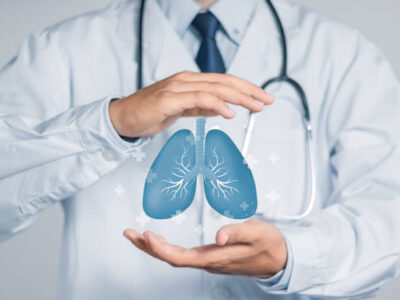
One of the most frequent heartbeat disorders is Atrial Fibrillation, also called AFib, which is categorized by irregular and rapid heart rhythms. It is a condition that affects millions of people around the globe, and they may run critical risks if they are not addressed soon.
The right thing to do is to identify the symptoms of atrial fibrillation as quickly as possible so that prompt medical attention can be given to them. Doctors, nurses, and patients themselves can do it. When the symptoms are identified early, it can help improve the outcomes of the patients, and their quality of life will be much better.
Recognizing Symptoms:
People who have AFib have different attributes of their condition, which precisely highlights the need to know the signs and symptoms. Rapid or irregular heartbeat feelings and palpitations are common indicators of AFib. In individual cases, people are seen as tired, dizzy, or short of breath while carrying out physical activity. Specific individuals with AFib may not show any changes in their overall health status, which means they should be screened on a regular basis to prevent any health deterioration in high-risk populations such as older adults or people having heart problems.
Understanding the Implications:
Prolonged Atrial Fibrillation, by omission of diagnosis or treatment, may cause severe complications, for instance, an embolic stroke, heart failure, and other heart-related problems. The AFib irregular heartbeats create an ideal environment for forming blood clots in the heart. It increases the chance of stroke by five times, and when these clots move to the brain, a stroke occurs.
And since the heart pace-making mechanism in AFib leads to fluid retention in the lungs which leads to heart failure if there are no suitable treatments for it. If AFib symptoms are detected early, it will be possible to prevent the mild nature of the disease from developing into its most serious consequences.
Seeking Medical Attention:
In case you have some atrial fibrillation symptoms indicating or you generally feel distressed about your heart health, it would be highly advisable to visit your doctor as soon as possible. A physician can do a comprehensive testing, one at a time, that could include physical examination, ECG, or other further diagnostic tests for AFib confirmation.
Early prevention allows for the choice of adequate methods of treatment individually for people, with doctors using medications to control the heart rhythm and prevent any blood clots. It also demands people to follow some lifestyle modifications.
Empowering Patients:
Education and awareness affirm individuals’ power to restrict preterm coronary diseases. Knowing the symptoms that create atrial fibrillation, people will confidently decide whether it is still in time to have appropriate medical assistance or take steps to limit risk factors that could cause atrial fibrillation or its complications. According to cardiologists, good monitoring of heart health along with full compliance with doctor-recommended medication regimes are part of a successful treatment plan and better feeling.
Realizing AF symptoms is vital to immediately start treatment and generally achieve optimal results in cardiac disease. Attentiveness and proactiveness about the excellent health of the people and preventive measures are taken to avoid the deadly complications of AFib, which can lead to the upgrading of the overall quality of life of these individuals.
Managing Atrial Fibrillation: Treatment Strategies for Improved Heart Health
After the diagnosis of atrial fibrillation, the essential treatment strategies are applied to minimize the accompanying symptoms, reduce the risks for complications, and ultimately improve heart health. The management schemes of atrial fibrillation may differ from case to case based on symptoms’ severity, comorbidities, and individual patient factors, to name a few.
Here are some common methods used to treat atrial fibrillation:
Medication Therapy:
Drugs are often given in such cases to help manage patients’ heart rate and rhythm. Rate control drugs like beta-blockers or calcium channel blockers are groups of drugs that produce a negative chronotropic effect. On the other hand, rhythm control medications such as antiarrhythmic drugs are responsible for restoring the regular heartbeat rate and preventing the AFib episodes from occurring. To be specified, blood thinners or anticoagulants may be managed due to their ability to decrease the risk of blood clots and stroke during atrial fibrillation.
In specific cases, cardioversion is likely to be suggested to re-establish the normal functioning of the heart if the condition is diagnosed as atrial fibrillation in some individuals. A procedure known as cardioversion can be achieved optionally, either electrically (electrical cardioversion) or chemically (chemical cardioversion), to convert the impaired heart rhythm back towards an electrical sinus rhythm. This process taking place under medical surveillance is generally recommended.
Catheter Ablation:
Catheter ablation is a minimally invasive technique used for the treatment of atrial fibrillation on a pinpoint basis by rendering abnormal electrical signals in the heart futile. The catheter ablation intervention is composed of the use of a thin, flexible tube (catheter) that is targeted towards blood vessels and the heart, whereby specialized techniques (such as radiofrequency energy or cryotherapy) are employed to cure or isolate heart muscle areas that generate or set off the electrical triggers causing AFib episodes. Remote stoke ablation has often been received as a possible treatment option for those patients who have drug-refractory symptoms.
Lifestyle Modifications:
Apart from medical interferences, which have a significant influence on the treatment of atrial fibrillation and heart health, lifestyle modifications can also perform the same role. These may include:
- It helps with fat burning and muscle building. And the best thing is, it keeps your fit.
- They are lowering the consumption of alcohol and caffeine since these substances are likely AFib triggers.
- Get to know how to deal with stress by adopting relaxation techniques like meditation and yoga, for example, just by stopping smoking, as it is a well-known risk factor (for both atrial fibrillation and cardiovascular diseases).
- Blood pressure and cholesterol levels would need to be monitored regularly and be in line with medical recommendations for management.
Regular Follow-Up Care:
Ongoing monitoring and follow-up care are to be measured as essential and inextricable attributes in the A-fib care plan. Patients may be recommended for periodic medical examinations or ECGs (Electrocardiograms) prescribed by experts and to monitor improvements after treatment programs initiated. Alterations of medication to dosages or treatment plans will be done when necessary to improve symptoms and reduce effects connected with AFib.
Conclusion
The use of multifaceted approaches encompassing medication therapy, cardioversion, catheter ablation, lifestyle modifications, frequent monitoring of the condition, and other non-drug therapies allows the person to manage the condition well and improve their heart health. Through close cooperation with health care professionals and the practice of healthy habits, a person with quivering heart muscle may be cured with the very best approach.
For more blog click here.











